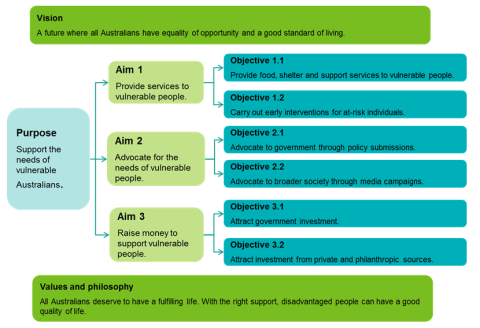Strategic Planning
Strategic planning is the process you use to decide on your organisation’s purpose. You can then decide what actions you will take to carry out the plan. A well-informed, careful plan will make sure you provide services in the best possible way.
The plan should have a high-level overview of your organisation’s direction with enough detail that it can be applied to your day-to-day operations. Monitor and update your plan regularly to get the most out of it.
Decide on the vision, purpose, priorities and goals
Begin your strategic plan by deciding on your organisation’s vision, purpose, priorities and goals. These areas will help you plan more specific details later.
- Vision – what is your organisation’s ideal future?
- Purpose – what is your organisation’s role in that future?
- Aims – how will you achieve that purpose?
- Goals – what steps will you take to achieve the aims?
- Values and philosophy – why are you trying to achieve this vision? This will support the other parts of your plan.
While there is more than one way to lay out a strategic plan, below is an example of a community organisation layout.
Example layout of a strategic plan

Who are your target clients?
Who your clients are will depend on the type of services you deliver and your sector. Think about grouping your clients by:
- background: if your clients are from culturally and linguistically diverse backgrounds, the way you approach and provide services may need to be different
- age group: different aged clients may have very different needs
- level of need: some clients need a less intensive service while others, with more complex needs, may want more specialised help
- issue to be solved: your clients may have specific issues or a combination of issues
- interests: your clients may have different interests that they would like to follow and take part in.
Decide on the actions you will take
Once you have set out your strategic plan, you need to decide what actions you will take to carry out the plan. These actions are called business processes. Think about the steps, or tasks, you need to do to deliver services and carry out internal processes.
You may also like to think about how you can design your workforce (staff) so your organisation is efficient and producing good outcomes.
Start your plan and monitor it
Keep monitoring the progress of your strategic plan to get the best value for your organisation.
To monitor how well your strategic plan is going, you need to decide how you will measure success. You can then track these measures to monitor your progress. For example, your organisation’s governance board might meet every four months and have an update of progress against the strategic plan as a standing item.
